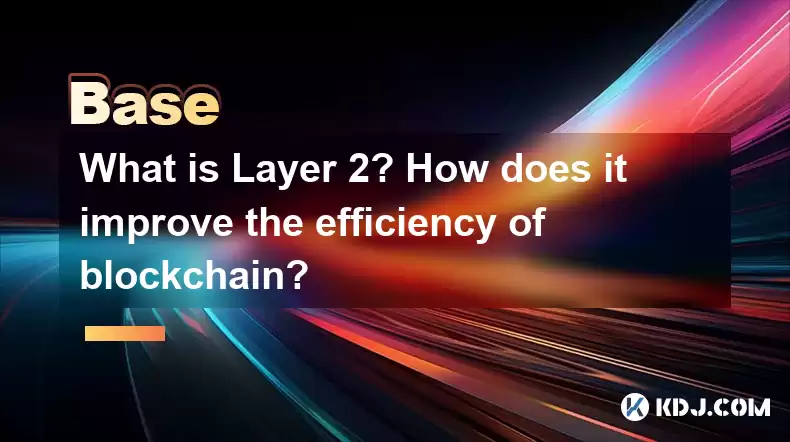-
 Bitcoin
Bitcoin $114100
-0.14% -
 Ethereum
Ethereum $3635
-0.73% -
 XRP
XRP $2.949
-2.85% -
 Tether USDt
Tether USDt $0.9999
-0.03% -
 BNB
BNB $760.3
-0.78% -
 Solana
Solana $163.8
-2.77% -
 USDC
USDC $0.9998
-0.04% -
 TRON
TRON $0.3323
-0.57% -
 Dogecoin
Dogecoin $0.2004
-2.99% -
 Cardano
Cardano $0.7245
-2.87% -
 Hyperliquid
Hyperliquid $37.52
-3.75% -
 Stellar
Stellar $0.3915
-3.58% -
 Sui
Sui $3.416
-2.20% -
 Bitcoin Cash
Bitcoin Cash $559.5
-0.84% -
 Chainlink
Chainlink $16.41
-2.16% -
 Hedera
Hedera $0.2406
-1.78% -
 Ethena USDe
Ethena USDe $1.001
0.00% -
 Avalanche
Avalanche $22.13
-1.98% -
 Litecoin
Litecoin $117.8
-4.32% -
 UNUS SED LEO
UNUS SED LEO $8.989
0.01% -
 Toncoin
Toncoin $3.183
-5.09% -
 Shiba Inu
Shiba Inu $0.00001214
-1.97% -
 Uniswap
Uniswap $9.654
-1.71% -
 Polkadot
Polkadot $3.616
-1.18% -
 Monero
Monero $291.6
-2.66% -
 Dai
Dai $0.9999
0.00% -
 Bitget Token
Bitget Token $4.310
-1.10% -
 Cronos
Cronos $0.1382
-1.93% -
 Pepe
Pepe $0.00001021
-3.40% -
 Aave
Aave $257.9
-1.42%
What is Layer 2? How does it improve the efficiency of blockchain?
Layer 2 (L2) blockchain solutions enhance scalability by processing transactions off-chain, thereby increasing speed and reducing fees on the base Layer 1 (L1) blockchain. Various L2 types exist, including rollups and state channels, each with unique strengths and security considerations.
Mar 05, 2025 at 10:18 am

Key Points:
- Layer 2 (L2) solutions are technologies built on top of a base blockchain (Layer 1 or L1) to enhance its scalability and transaction speed.
- L2s handle transactions off-chain, reducing the load on the main blockchain and improving efficiency.
- Several types of L2 solutions exist, each with its own strengths and weaknesses. Common examples include state channels, rollups, and sidechains.
- Understanding L2s is crucial for comprehending the future of blockchain technology and its potential for mass adoption.
What is Layer 2?
Layer 2 (L2) scaling solutions are a crucial component in the ongoing evolution of blockchain technology. They address the inherent limitations of Layer 1 (L1) blockchains, such as slow transaction speeds and high fees, by processing transactions off-chain. This off-chain processing significantly reduces the burden on the main blockchain network, allowing for faster and cheaper transactions. Think of L1 as the base highway, and L2s as the efficient expressways built on top.
How L2 Improves Blockchain Efficiency
The primary way L2s improve blockchain efficiency is by reducing congestion on the main chain. By handling a large volume of transactions off-chain, L2s alleviate the strain on the L1 network's resources. This leads to faster confirmation times for transactions, which is critical for many applications. The reduced congestion also results in significantly lower transaction fees, making the blockchain more accessible to a wider range of users.
Types of Layer 2 Scaling Solutions
Several different types of L2 solutions exist, each with its unique approach to scaling:
- State Channels: These allow multiple parties to transact repeatedly off-chain, only settling the final balance on the L1 blockchain. This significantly reduces the number of on-chain transactions.
- Rollups: These bundle multiple transactions into a single transaction, which is then submitted to the L1 blockchain for verification. This reduces the data load on the L1. There are two main types: optimistic rollups and zero-knowledge rollups (ZK-Rollups). Optimistic rollups assume transactions are valid unless proven otherwise, while ZK-Rollups use cryptographic proofs to verify transactions without revealing their details.
- Sidechains: These are separate blockchains that run alongside the main chain. They can process transactions independently and then periodically transfer the results back to the main chain. This offers high throughput but requires trust in the security of the sidechain.
- Plasma: This is a framework for creating child blockchains that are secured by the main chain. Plasma chains can process many transactions before submitting a summarized record to the main chain.
Security Considerations in Layer 2 Solutions
While L2s enhance efficiency, security remains a paramount concern. The security of an L2 solution often depends on the security of the underlying L1 blockchain. However, the specific mechanisms employed by each type of L2 also play a crucial role in its security. For example, rollups leverage the security of the L1 blockchain for transaction validation, while sidechains might introduce additional security risks if not carefully designed and implemented.
The Role of L2 in Blockchain Adoption
The widespread adoption of blockchain technology is significantly hampered by its scalability limitations. L2 solutions are instrumental in addressing this challenge. By increasing transaction throughput and reducing costs, L2s pave the way for a broader range of applications, from decentralized finance (DeFi) to supply chain management and beyond. As L2 technology continues to mature, it will likely play an even more significant role in the future of blockchain.
Interoperability Between L1 and L2
Seamless interoperability between L1 and L2 is vital for the success of L2 scaling solutions. Users need to easily move assets and interact with applications across both layers. Several projects are working on improving interoperability through various methods, ensuring a smooth and integrated user experience. This is crucial for broader adoption and the avoidance of fragmentation within the ecosystem.
Future Developments in Layer 2 Technology
The field of L2 scaling solutions is constantly evolving. Researchers and developers are continually exploring new approaches to improve efficiency, security, and interoperability. We can expect to see advancements in areas such as faster transaction processing, more efficient data compression techniques, and enhanced privacy features.
Common Questions and Answers:
Q: Are Layer 2 solutions secure?
A: The security of an L2 solution is dependent on the underlying L1 and the specific L2 implementation. Rollups generally inherit the security of the L1, while sidechains have their own security considerations.
Q: How do Layer 2 solutions differ from Layer 1?
A: Layer 1 is the base blockchain, while Layer 2 solutions are built on top to improve scalability and transaction speed. L1 handles the core security and consensus mechanisms, while L2 processes transactions off-chain.
Q: Which Layer 2 solution is the best?
A: There is no single "best" L2 solution. The optimal choice depends on the specific requirements of the application, including factors such as throughput needs, security requirements, and cost considerations.
Q: What are the limitations of Layer 2 solutions?
A: While L2s offer significant improvements, they are not without limitations. Complexity of implementation, potential security vulnerabilities, and the need for interoperability with L1 are some of the challenges.
Q: Will Layer 2 solutions completely replace Layer 1?
A: No, Layer 2 solutions are designed to complement Layer 1, not replace it. L1 provides the foundation for security and consensus, while L2 enhances scalability and efficiency.
Disclaimer:info@kdj.com
The information provided is not trading advice. kdj.com does not assume any responsibility for any investments made based on the information provided in this article. Cryptocurrencies are highly volatile and it is highly recommended that you invest with caution after thorough research!
If you believe that the content used on this website infringes your copyright, please contact us immediately (info@kdj.com) and we will delete it promptly.
- Coinbase, Financing, and the Crypto Market: Navigating Choppy Waters in NYC Style
- 2025-08-06 12:50:11
- Bitcoin in Indonesia: Crypto Education and Economic Strategy
- 2025-08-06 12:50:11
- DeriW Mainnet: Zero Gas Fees Revolutionize On-Chain Derivatives Trading
- 2025-08-06 10:30:11
- IOTA, Cloud Mining, and Eco-Friendly Crypto: A New York Investor's Take
- 2025-08-06 10:30:11
- Kaspa (KAS) Price Prediction: August 6 - Will It Break Free?
- 2025-08-06 10:50:12
- Pension Funds, Bitcoin ETFs, and Exposure: A New Era of Institutional Crypto Adoption
- 2025-08-06 12:55:12
Related knowledge

What is the difference between CeFi and DeFi?
Jul 22,2025 at 12:28am
Understanding CeFi and DeFiIn the world of cryptocurrency, CeFi (Centralized Finance) and DeFi (Decentralized Finance) represent two distinct financia...

How to qualify for potential crypto airdrops?
Jul 23,2025 at 06:49am
Understanding What Crypto Airdrops AreCrypto airdrops refer to the distribution of free tokens or coins to a large number of wallet addresses, often u...

What is a crypto "airdrop farmer"?
Jul 24,2025 at 10:22pm
Understanding the Role of a Crypto 'Airdrop Farmer'A crypto 'airdrop farmer' refers to an individual who actively participates in cryptocurrency airdr...

What is the difference between a sidechain and a Layer 2?
Jul 20,2025 at 11:35pm
Understanding the Concept of SidechainsA sidechain is a separate blockchain that runs parallel to the main blockchain, typically the mainnet of a cryp...

What is the Inter-Blockchain Communication Protocol (IBC)?
Jul 19,2025 at 10:43am
Understanding the Inter-Blockchain Communication Protocol (IBC)The Inter-Blockchain Communication Protocol (IBC) is a cross-chain communication protoc...

How does sharding improve scalability?
Jul 20,2025 at 01:21am
Understanding Sharding in BlockchainSharding is a database partitioning technique that is increasingly being adopted in blockchain technology to enhan...

What is the difference between CeFi and DeFi?
Jul 22,2025 at 12:28am
Understanding CeFi and DeFiIn the world of cryptocurrency, CeFi (Centralized Finance) and DeFi (Decentralized Finance) represent two distinct financia...

How to qualify for potential crypto airdrops?
Jul 23,2025 at 06:49am
Understanding What Crypto Airdrops AreCrypto airdrops refer to the distribution of free tokens or coins to a large number of wallet addresses, often u...

What is a crypto "airdrop farmer"?
Jul 24,2025 at 10:22pm
Understanding the Role of a Crypto 'Airdrop Farmer'A crypto 'airdrop farmer' refers to an individual who actively participates in cryptocurrency airdr...

What is the difference between a sidechain and a Layer 2?
Jul 20,2025 at 11:35pm
Understanding the Concept of SidechainsA sidechain is a separate blockchain that runs parallel to the main blockchain, typically the mainnet of a cryp...

What is the Inter-Blockchain Communication Protocol (IBC)?
Jul 19,2025 at 10:43am
Understanding the Inter-Blockchain Communication Protocol (IBC)The Inter-Blockchain Communication Protocol (IBC) is a cross-chain communication protoc...

How does sharding improve scalability?
Jul 20,2025 at 01:21am
Understanding Sharding in BlockchainSharding is a database partitioning technique that is increasingly being adopted in blockchain technology to enhan...
See all articles

























































































